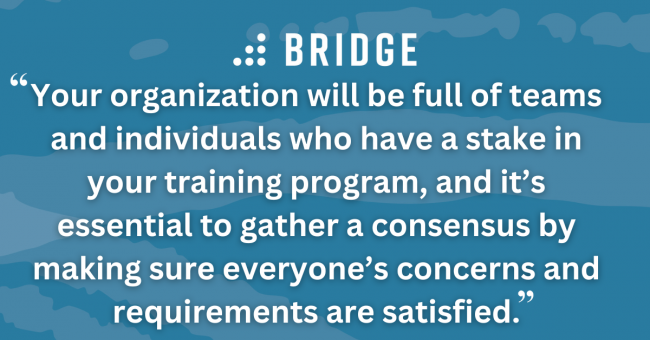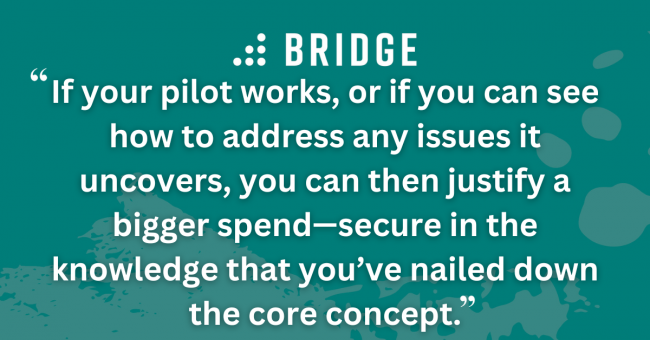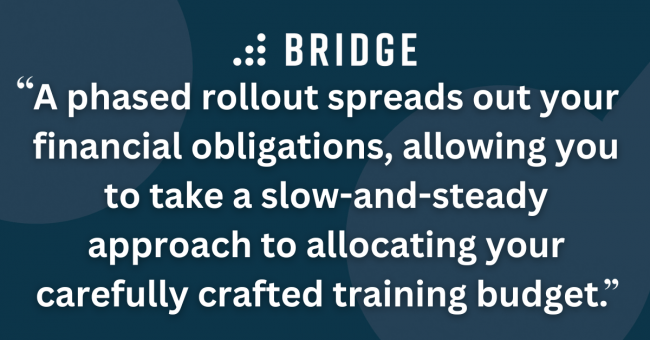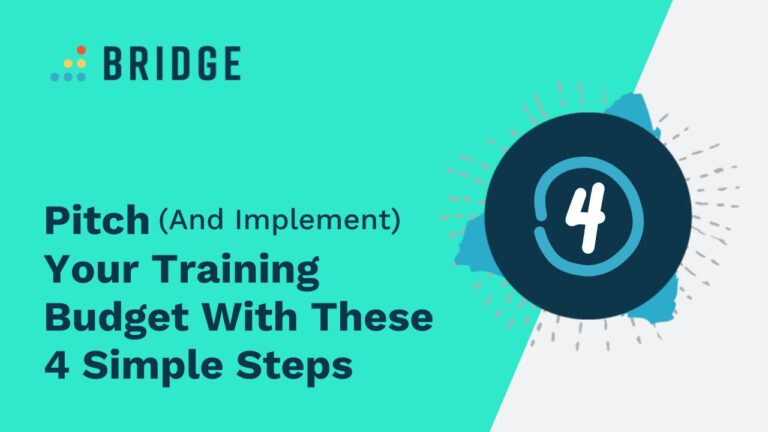Employee development is a strong investment. With the right planning, it can result in a wide array of possible returns, from increased productivity to stronger retention. But if you want to realize those returns, you’ll need to develop a training budget that reflects your organization’s training needs and addresses its pain points. In other words: you’ll want to create a watertight business case.
Once you can articulate how your training budget will have a positive impact on your bottom line, you’ll need to take your proposed training costs to the appropriate stakeholders and decide on a sensible rollout strategy. There’s a lot to consider—so let’s break it down.
Read on to discover:
- How to frame your training budget around your organization’s needs
- The different concerns your internal stakeholders may have about your training spend
- Why you might want to test the waters of your budget with a pilot study
- The budgetary benefits of a phased rollout
Step 1: Evaluate Your Company’s Business Case for Training Costs
What’s the problem you’re trying to solve? That’s the question animating any L&D business case. If you can’t answer that question, you won’t know how you’re going to spend your training budget. In fact, you’re unlikely to be allocated any budget at all unless you can justify the amount you’re asking for.
Evaluating the business case for your training costs also saves you time when you’re shopping around for the right learning technologies to support your program. Are you looking for sophisticated learning analytics to track compliance training? Or do you need an upskilling platform to improve your skills development? If you’re not sure, you might spend hours of wasted time barking up the wrong vendor’s tree.
As such, you need to reflect on some simple, practical questions that get to the center of your learning needs. Ask yourself:
- What problem are we trying to solve?
- How much is that pain point currently costing us?
- What capabilities do we currently have?
- What capabilities do we need to overcome our pain points?
These questions will allow you to evaluate your business needs and prepare a budget proposal. This can then be taken to the stakeholders who influence any spend-related decisions.

MORE ABOUT BUSINESS OUTCOMES | ‘The Power of People Analytics: How to Turn People Data Into Business Results’
Step 2: Gain Company Stakeholder Consensus for Your Training Budget
Understanding how to pitch your training budget is half the battle—the other half is understanding where to pitch it.
Your organization will be full of teams and individuals who have a stake in your training materials, and it’s essential to gather a consensus by making sure everyone’s concerns and requirements are satisfied.
Some of those stakeholders will be obvious. HR, for example, has overlaps with L&D, so you might need your HR team’s involvement—and your budget might also need sign-off from someone with budgetary responsibilities, like a CFO. At the same time, you’ll also want to loop in your security team to make sure they’ve done their due diligence. And, if your budget includes learning tech like an LMS, your IT department might want a voice in discussions over implementation.
At this stage, and especially when you’re looking for a learning system like the Bridge learning platform, you’ll benefit from the advice of the sales representatives you encounter. By bringing your business case to an LMS vendor, for example, you’ll be dealing with someone who’s intimately familiar with the processes, best practices, and subtler considerations that make a good training program. Plus, they’ll be able to instantly advise on whether and how their product is suitable for your needs, introducing an extra level of efficiency that can only benefit your wider budgetary goals.

KEEP READING | ‘4 Cross-Stakeholder Benefits of a Talent Marketplace’
Step 3: Bolster Your Budget Planning With a Pilot Study
If you’re relatively new to the world of training budgets, it might feel a little daunting to anticipate every detail of your budgetary needs—even when you’ve mapped out your business case. Luckily, you don’t have to base your financial commitments on speculation alone. Instead, you might consider testing your training concept by building a pilot phase into your budget.
By testing your training plan on a smaller group of people for a shorter period of time you’ll be in a great position to evaluate your concept, iron out all the details, and seed the best practices that you can then adopt on a wider scale.
When it comes to your learning management system, for example, you might want to buy 100 licenses over a three-month period—rather than shelling out for 10,000 licenses from the get-go and hoping for the best!
If your pilot works, or if you can see how to address any issues it uncovers, you can then justify a bigger spend—secure in the knowledge that you’ve nailed down the core concept.

Step 4: Deliver Stronger Results With a Phased Rollout
Like piloting, a phased rollout allows you to take a gradual approach to launching your program and implementing your training budget.
This is particularly handy for larger organizations that span different geographical regions. By rolling out your new learning technologies and practices one region at a time, you can gradually ramp up the number of users and participants, allowing you to assess the effectiveness of your program and make tweaks to it as you progress.
Plus, a phased rollout also spreads out your financial obligations, allowing you to take a slow-and-steady approach to allocating your carefully crafted training budget. If you’re new to the world of training and development, this strategy is a great way to refine your program’s launch and ensure that it remains manageable throughout the process.
PLANNING TIPS FROM THE ARCHIVES | ‘How to Create an Employee Engagement Action Plan That Turns Insights Into Results’
Looking For Further Budget-Based Tips and Tricks?
Download our full ebook, “How to Get Your Training Budget Approved,” for a hand-picked selection of budgetary insights, from the ways you can achieve a good ROI to the learning technology your budget will be built around.




